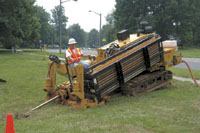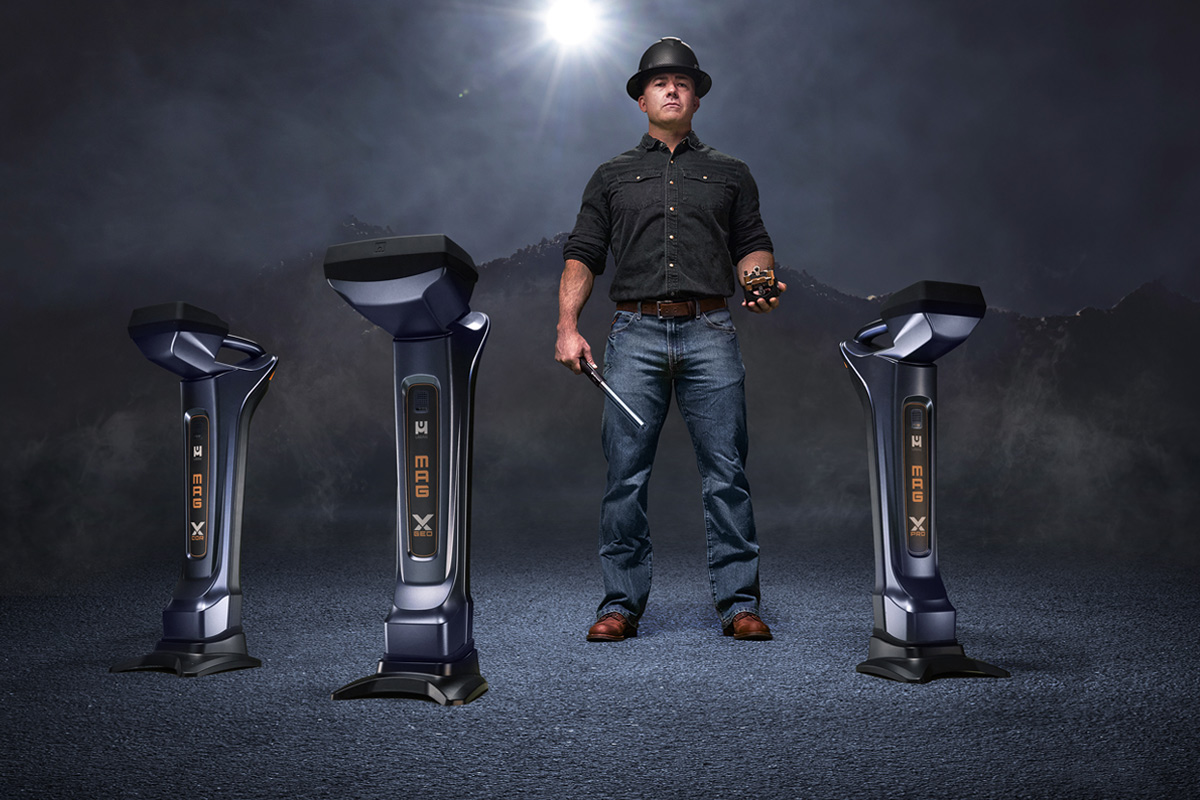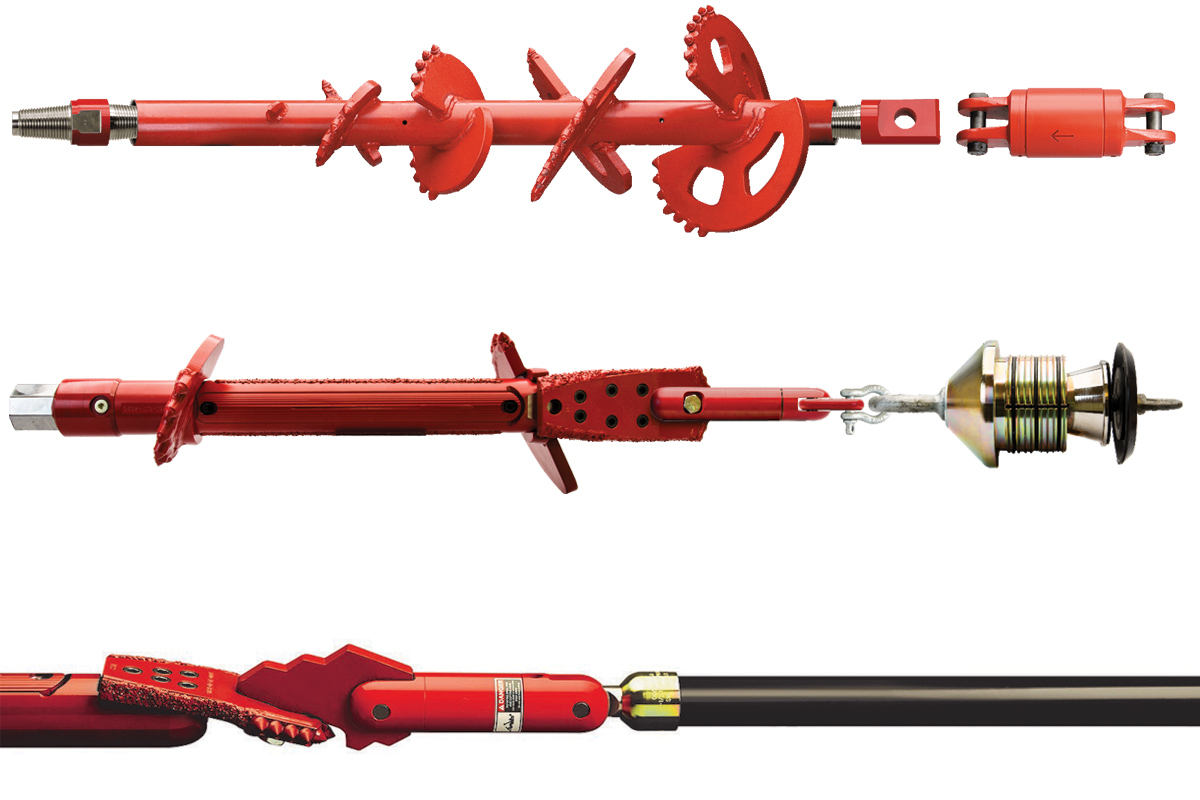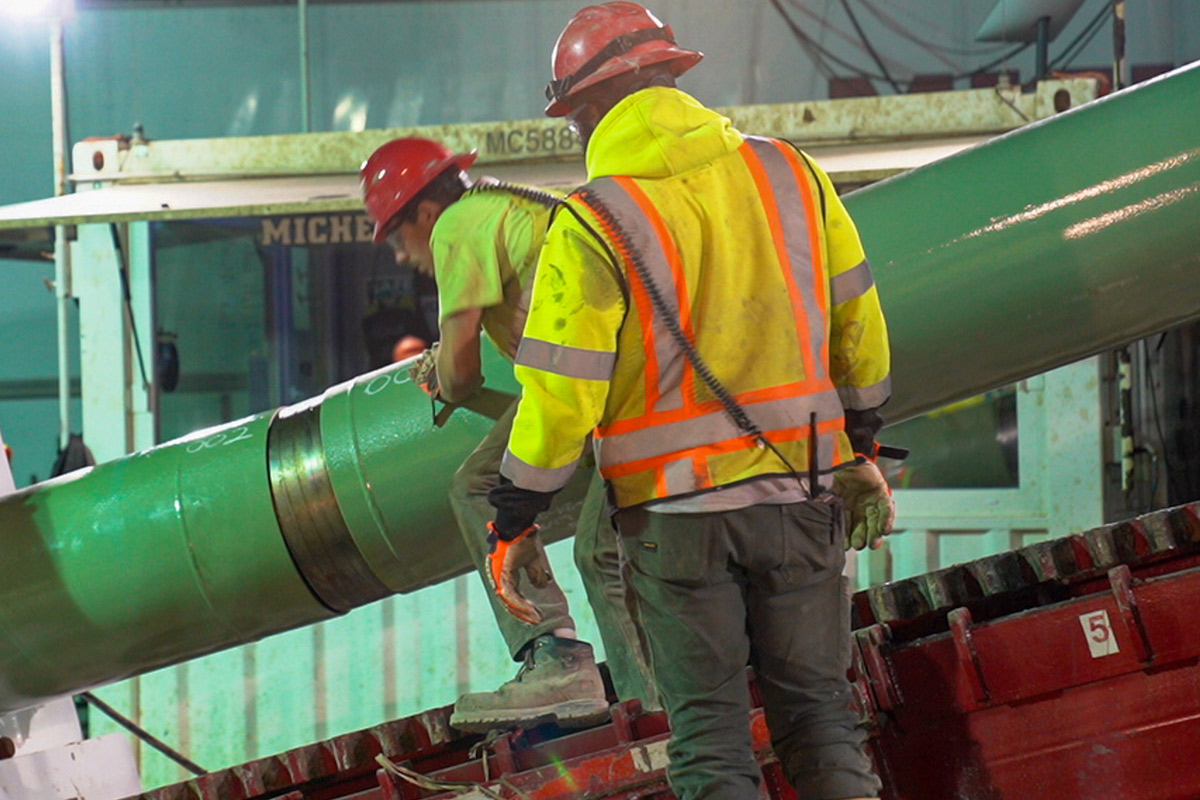Drilling Rock in Virginia
 When drilling in a residential area around some of the largest gas pipelinesin the United States, there’s no question that safety comes first. And oneutility contractor working to preserve these pipelines has created a process tohelp ensure both his crews and the residents aren’t placed in danger.
When drilling in a residential area around some of the largest gas pipelinesin the United States, there’s no question that safety comes first. And oneutility contractor working to preserve these pipelines has created a process tohelp ensure both his crews and the residents aren’t placed in danger.
Matt Kelly, co-owner of Ballard Utilities Construction LLC, Anderson, S.C.,knows the ins and outs of horizontal directional drilling (HDD). He has been inthe industry since 1990 and his knowledge explains one of the reasons hiscompany was hired by Williams Gas Pipeline — Transco for a major cathodicprotection project.
Williams Gas Pipeline delivers clean-burning natural gas from productionareas to millions of Americans’ local utilities. The company, headquartered inTulsa, Okla., operates more than 15,000 miles of interstate natural gaspipelines. Its three natural gas transportation units deliver about 12 percentof the natural gas consumed in the United States. Transco, one of the naturalgas transportation units, comprises 10,500 miles of pipeline that service citiesalong the East Coast, including Atlanta and New York City.
To preserve these major gas pipelines, Ballard Utilities Construction willinstall cathodic protection, which prevents corrosion of the steel pipelines.Cathodic protection involves installing cables of AnodeFlex, which transmit acurrent onto the gas pipeline so it can repel corrosion. Because it is a moreactive metal, the AnodeFlex cable attracts the corrosion away from the steel gaspipeline so it corrodes first.
Installing Cathodic Protection
Thisyear, Ballard Utilities Construction will install cathodic protection for110,000 ft of gas pipeline. In Fairfax, Va., Kelly’s crews are installing theprotection for four major gas mains, including two 30-in., a 36-in. and a 42-in.pipe. Because much of the work in and around the city occurs in residentialareas, Kelly uses a fleet of Vermeer Navigator HDD units to drill aroundobstacles.
“We’re in a housing area where everyone’s backyards are built right on top ofthe gas pipelines. And in everyone’s backyard there is either a chain-link orwood fence, and they have sheds and swimming pools,” he says. “The only way tocome through these areas is to bore everything.”
To determine which sections of the pipeline are in need of cathodicprotection, Williams Gas Pipeline regularly performs ground readings and takessoil samples, Kelly says. In the Fairfax residential area, Kelly’s crews areinstalling two 1 1/2-in. AnodeFlex cables that will run parallel between the 36-and 42-in. gas pipelines. The number of AnodeFlex cables that are placed dependson several factors, including the amount of corrosion coverage needed and thespace between the pipelines.
For this portion of the project, which costs $4.5 million, Ballard UtilitiesConstruction chose to use three of its five Vermeer HDD units — a D24x40A andtwo D18x22 machines. The company also owns two D16x20A HDD units, which it isusing in Anderson for power line installation jobs.
Putting Safety First
In working aroundsuch large gas pipelines, Kelly considers safety first and foremost. The largegas pipelines run parallel to the homes, many of which are as close as 10 ftaway.
“We have to get production, but production comes second to safety,” he says.“You’re talking about a pipeline that’s 800 lbs of pressure.”
Before drilling begins, Kelly has a four-member layout crew work two weeksahead to locate and pothole the gas pipelines and other utilities. The workersprobe every 50 ft to monitor if they are still following the route of the gaspipelines. They also measure in between the pipelines and mark the centerlinewith white paint so HDD operators can hold that line when boring.
“And then every single utility that crosses these pipelines, I make them digto it,” he says. “They measure it and then mark on a wooden stake what kind ofutility it is and how deep it’s buried.”
Once the layout crew has finished locating a section, it provides the HDDcrew with a utility log sheet. Kelly says some utility contractors may initiallyconsider a layout crew to be too costly. But his theory is that “drill rigsdon’t make money when operators have to stop to pothole a utility because theydon’t know how deep it is.”
It’s a proven fact that the layout crew has improved the HDD crews’production rates. In fact, Kelly says there have been a couple of instances whenthe HDD crew has bored so fast that it’s actually caught up to the layout crew,requiring him to add more workers to the layout crew.
Carving Through Shale Rock
Even thoughthe layout crew has helped make the job go more smoothly, the job hasn’t comewithout other obstacles.
Much of the 110,000 ft Ballard Utilities Construction must drill requiresgoing through red shale rock. Shale rock, which varies in color, is the mostcommon type of sedimentary rock and is formed from clay that is compactedtogether by pressure. It is relatively soft and has a smooth, greasy feel whenfreshly exposed, but is hard and brittle when dry. To tackle the hard groundconditions, Kelly says his HDD operators use either a TriHawk drill head or bearclaw drill head. So far the layers of rock have greatly varied from area toarea.
“Sometimes you can get 2 or 3 ft of good dirt and then you get into a softlayer of that shale, which you can get good steer out of with a bear claw. Butsome of it’s too hard and we have to use the TriHawk drill head to carve itout,” he says.
While boring through several of the homes’ back yards, the crew encounteredanother obstacle — mulch fill. As the operator bored to a depth of about 2 to 3ft, he noticed the drill head wasn’t grabbing. The reason why was unbeknownst toKelly and his crew — a thick layer of mulch fill laid just 8 in. beneath thedirt topsoil. Kelly believes the mulch fill was the result of a land clearingproject years before.
“We didn’t know there was mulch under there until we hit rock and the drillhead and rods started poking out of the ground,” he says. “The drill head justblasted out of the mulch because it’s so light it couldn’t hold itin.”
To overcome the obstacle, Kelly says all they could do was pullback the drillhead and start the bore over again, this time diving deep enough to avoid themulch layer.
Not always knowing what lies under the ground comes with the territory. Kellysays there will always be people who place things underground without getting apermit and notifying the proper entities so that it can be charted.
In addition to boring under the Reston National Golf Course in Reston, Va.,Kelly’s crews also must cross under creeks that are surrounded by solid graniterock. For those harder conditions that can’t be drilled through with a regulardrill head, Kelly says he plans to use a Vermeer RockFire rock drillingsystem.
With most of the shale rock, Kelly says his crews typically must do twopre-reams. However, in softer ground conditions, they have been able to drillout 500 ft without needing to pre-ream.
Because the AnodeFlex cables are wrapped with a mesh sock filled with a finecarbon slag powder, the HDD crews must be especially careful when pulling backthe cables. Applying too much pressure or allowing it to drag through the shalerock can tear a hole in the mesh sock, which would then make the AnodeFlex cableineffective. “The cable won’t be able to provide cathodic protection without thecarbon slag around it,” Kelly says. “If the mesh sock is torn and the cabletouches dirt, it will burn out.”
To successfully pull back the AnodeFlex cables, Ballard UtilitiesConstruction uses a 6- or 8-in. backreamer along with Poly-Bore and Bore-Geldrilling fluids. Kelly says his two Vermeer Navigator D18x22 HDD machines haveworked well on this project because they’re small and easy to maneuver inresidential areas, but powerful enough to drill through the shale rock. Crewsuse the D24x40A when needing additional power to complete longer bores in hardershale rock.
In the red shale rock, Kelly says each of his three HDD crews has beenaveraging between 600 and 800 ft per day. “These are good production rates,especially considering the soil conditions,” he says.
Ballard Utilities Construction has been providing utility installation formore than 40 years. And like Williams Gas Pipeline — Transco, Ballard UtilitiesConstruction believes that safety should never be compromised. This may be onereason why they fully grasp the significance of the job they were hired todo.
“What we’re doing out here is probably the most important preventivemaintenance Williams Gas Pipeline — Transco could do for this pipeline,” Kellysays.
Tara Deering is a technical writer in Des Moines, Iowa.




